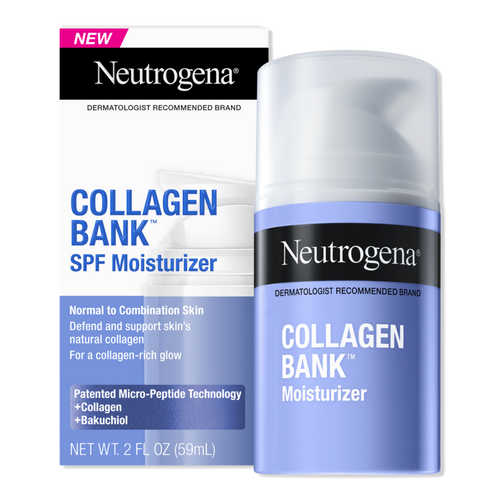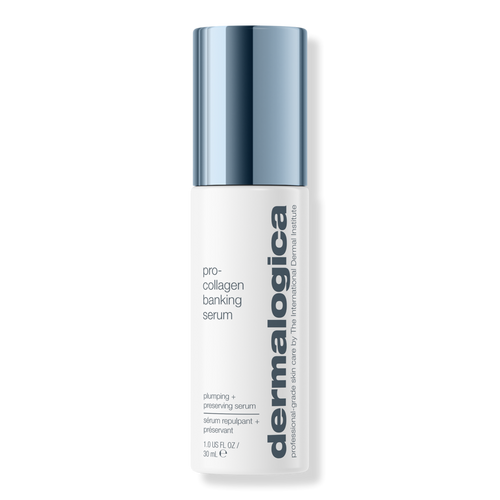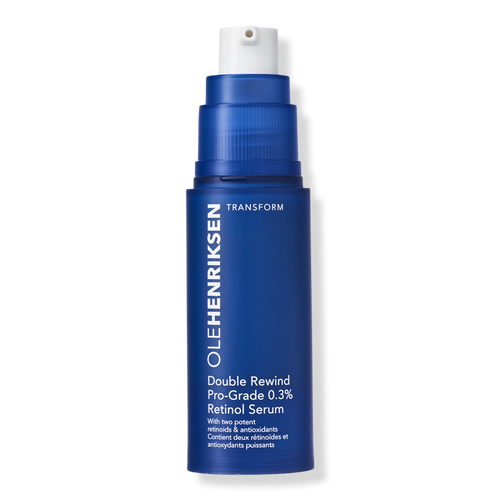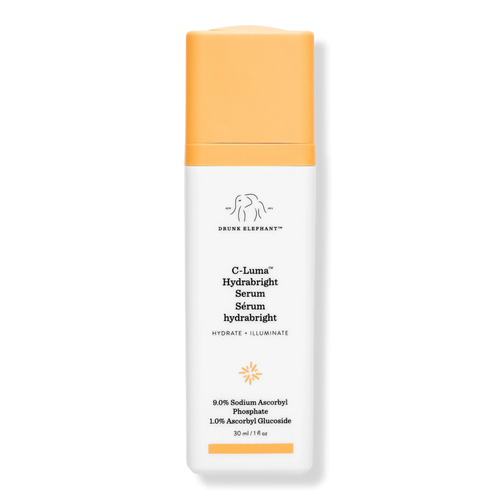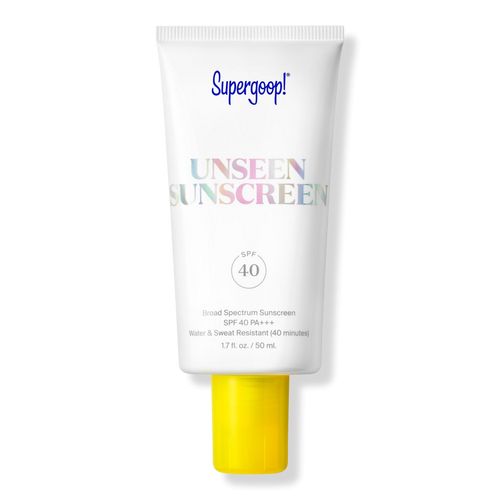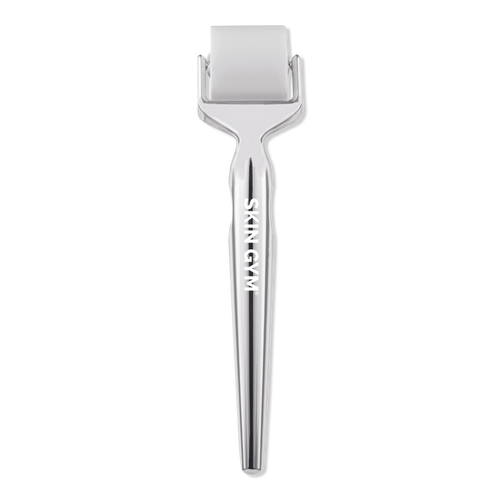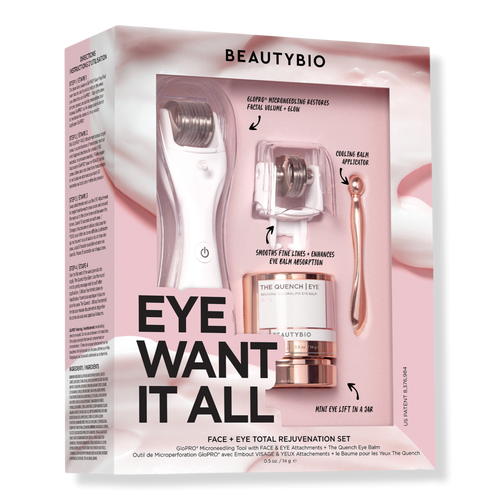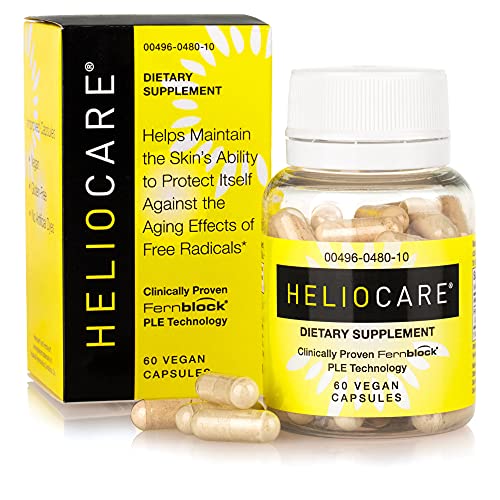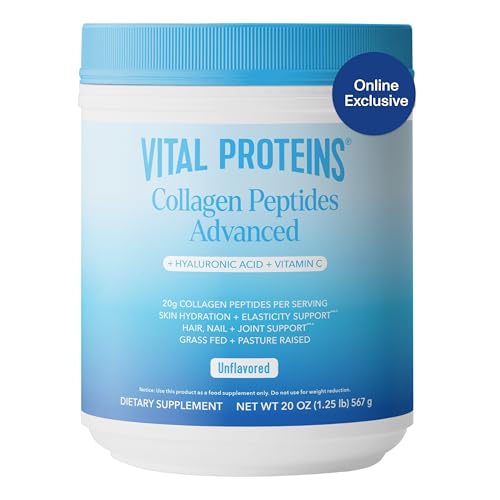So, Is Collagen Banking the $6,000 a Year Secret to More Youthful-Looking Skin?
Dermatologists reveal the truth behind the buzzy skincare trend.
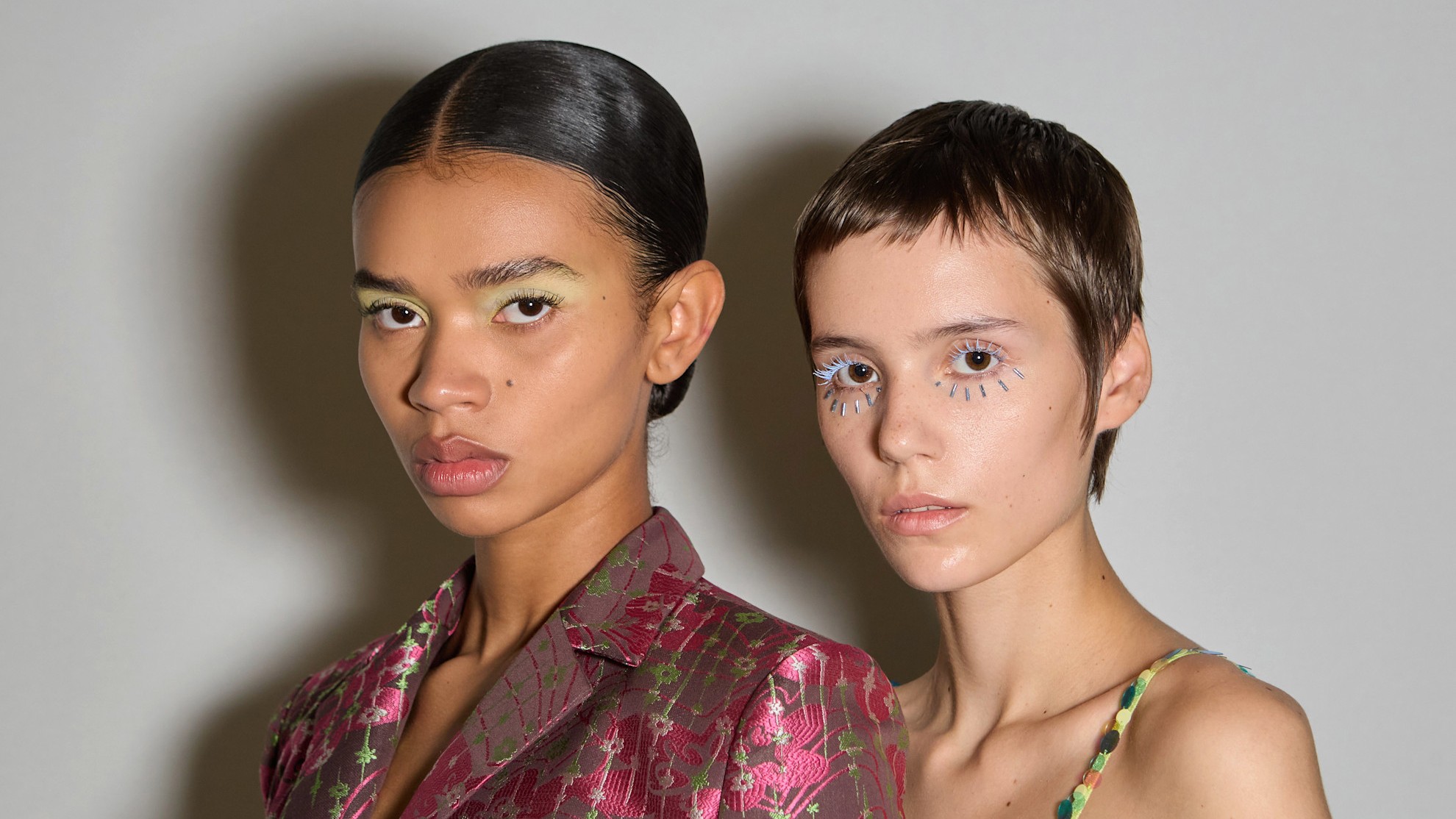

I have a savings account, invest in the stock market, put a portion of my paycheck in a 401K, and occasionally stuff a loose $20 into a coat pocket (we’re not here to judge). The point of all: put some money away now and have a little padding later. According to dermatologists (and 400 viral TikTok posts), I should apply the same logic to my face. I need to start collagen banking.
It makes sense: if I raise collagen capital while I’m young, I'll have an excess supply to pull from when I age and my skin starts to retire. “Collagen is the foundation of firm, youthful skin—literally. It’s like your skin’s scaffolding, working behind the scenes to keep everything lifted and smooth,” explains celebrity aesthetician and co-host of BeautyCurious Podcast Ian Michael Crumm.
“Unfortunately, collagen production begins to decline in your mid-20s,” he adds. It slows by one percent yearly, dropping off around 30 percent during menopause. But if there’s a nice, chunky pool of collagen to pull from when the skin starts to shift its collagen supply, the hope is that fine lines, wrinkles, skin sagging, and loss of volume will be less pronounced.
@shereeneidriss ♬ original sound - ShereeneIdriss
@drwrinklestopper ♬ original sound - Dr.WrinkleStopper
Being fully literate in The Finances of Skin™ requires a bit of an investment upfront. At baseline, it necessitates using high-quality, "anti-aging" skincare products like retinoids, sunscreen (debatably the single most important), vitamin C, and peptides. But collagen banking can also go hard on prejuvenation, and cost thousands of dollars a year. Skin pros recommend everything from collagen and elastin-stimulating lasers, radiofrequency tools, and injectables to specific foods and taking supplements proven to boost natural collagen levels.
The good news: Crumm and board-certified dermatologists Ella Glaser, M.D. FAAD, and Jenny Liu, M.D. FAAD, have volunteered to be my collagen banking advisers. Here, they’re sharing everything to know about the skincare principle turned viral trend.
What Is Collagen?
Time for a crash course! To understand collagen banking, it’s key to comprehend the point of collagen. Collagen is a protein found throughout the body; in the vasculature, hair, bones, and tendons—it’s everywhere. Notably, “it is one of the main components in the skin’s dermis layer, a deeper layer, and it helps provide structure and strength to the skin,” explains Dr. Glaser. When we’re young and spry (read: under 25), collagen production runs like a well-oiled machine that keeps skin looking plump. But once the mid-to-late-20s roll around, production takes a hit. “It starts to decrease by about one percent a year and accelerates during menopause due to hormonal changes,” explains Dr. Liu.
What Is Collagen Banking?
Collagen banking is pretty similar to the concept of prejuvination—it’s all about being proactive when it comes to anti-aging, addressing concerns before they’re even concerns to being with. “The idea is to build and preserve your skin’s collagen reserves now, so that you can delay the visible signs of aging later,” says Crumm. “By maintaining elasticity and firmness early, you’re essentially saving your youthful glow for the future.”
Stay In The Know
Get exclusive access to fashion and beauty trends, hot-off-the-press celebrity news, and more.
While the term “collagen banking” is new (searches for “collagen banking” increased 100 percent in the past month, according to Google Trends), the concept has been a standard in dermatology practices for decades. It’s why there are so many skincare products and treatments that tout collagen production.
“The science behind collagen banking is real,” confirms Dr. Liu. “Numerous studies have shown that skincare ingredients like retinoids and treatments like fractional lasers can effectively boost collagen production.” That all said, collagen banking is a long-term strategy so don’t expect results overnight—it’s about prevention and maintaining skin health over time.
How Do I Collagen Bank?
“It’s a two-part approach: stimulate collagen production and protect what you already have,” says Crumm. “It’s about giving your skin the tools to stay strong and resilient over time.” Here, Marie Claire experts break down their top tips for how to collagen bank effectively.
Use High-Quality Skincare
My motto: all good skin starts with good skincare. If collagen banking is the goal, it’s key to curate a regimen of products that boost collagen production over time. “Retinoids (like prescription tretinoin or over-the-counter retinol) are collagen powerhouses,” says Crumm. “Exfoliants, like AHAs, can also promote cell turnover and keep collagen production alive.”
While you will want to have at least one of the above in your routine, supplementary skincare that keeps your face hydrated and healthy is just as important. Hydrating peptides are key to a balanced complexion, while vitamin C is important to protect existing collagen from damage.
Wear Sunscreen
Sun damage is the number one cause of aging—and dermatologists and beauty editors alike won’t let you forget it. UV exposure puts stress on the skin, which leads to inflammation and degradation of healthy collagen, which is why it’s so important to be protected with a broad-spectrum SPF. “Sun protection is the most important for collagen banking,” says Dr. Glaser. “If you are not wearing daily sunscreen, everything else you are doing for collagen banking is wasted money.” Good news: Marie Claire has dozens of recommendations for the best sunscreens.
Consider Doing Lasers
There’s no shortage of lasers and treatment devices, many of which were designed to boost collagen production by creating micro-injuries. That’s exactly what you can expect from a resurfacing laser like Fraxel, which damages deeper layers of the skin to stimulate remodeling. There are also radiofrequency and ultrasound devices like Thermage and Sofwave, respectively, that work to stimulate collagen by using heat. They warm up the lower layers of the skin to signal cells to create more collagen.
Oftentimes, your doctor will take a multi-modality approach and combine a handful of lasers to get the best results. While lasers can be incredibly impactful, they can cost a bit more money. Depending on location, laser, and physician, you may end up spending a few thousand dollars for a series of treatments. For example, Fraxel costs roughly $1,000, while Sofwave can cost close to $4,500.
Try Microneedling
I’m a big fan of at-home microneedling, which uses .5-millimeter needles. “It produces small micro-channels in the skin, which lead to new collagen and elastin production,” explains Dr. Glaser. There are also in-office microneedling procedures that use larger needles (think: 2-milimeter needles). “Radiofrequency is often paired with microneedling to defer heat at a controlled temperature and lead to the formation of new collagen as well as skin tightening.”
Do BioStimulatory Injectables
If you’re determined to improve your collagen bank, a bio-stimulatory filler, like Sculptra, is worth considering. While it will instantly improve skin volume, it also sends signals to your cells to boost collagen production, leaving your skin plumper well after the filler has been metabolized. As Dr. Glaser points out, studies have shown a 66 percent increase in collagen three months after injections.
Eat a Healthy Diet
A well-balanced diet is quite literally good for your skin. “There are certain foods that contain high levels of collagen such as red meat, fish, chicken, nuts, and beans,” says Dr. Glaser. “Look for foods that are rich in vitamin C, such as dark leafy greens, citrus fruits, and peppers, too.” While these nutrients do need to be broken down in order to harness the collagen, eating them over time will have a positive effect on your collagen bank.
Take Supplements
I’ll be totally honest: there aren’t many thorough studies that prove collagen supplements make a difference in overall collagen supply. There is some evidence, but Dr. Glaser notes that there is a lack of large-scale studies. “Collagen supplements vary in dose, concentration, and source, with the most common sources being fish, chicken, and bovine,” she says. That said, taking a collagen supplement can’t hurt (and it might help!). Crumm recommends hydrolyzed collagen peptides. “They’re easily absorbed and clinically shown to improve skin hydration.”
You may also want to consider a sun protection supplement, like Heliocare, to amp up your skin’s defense against UV damage.
When Should I Start Collagen Banking?
Ideally, collagen banking should begin in your 20s or early 30s, when natural collagen levels start to decline, says Dr. Liu. “Early intervention helps prevent significant collagen loss and maintains skin elasticity and firmness longer.” That said, it’s never too late to boost your collagen supply. As Crumm puts it: “Consistency is everything. Collagen banking isn’t a quick fix; it’s a long-term commitment.”
Can Collagen Banking Be Dangerous?
There’s no inherent harm to collagen banking—just make sure you’re using safe, evidence-based skincare products and receiving treatments from a board-certified provider. Still, you can have too much of a good thing. “Overuse of aggressive procedures and products like frequent laser treatments or high-strength retinoids can damage the skin barrier and cause irritation and undesired hyperpigmentation,” says Dr. Liu. That’s why you’ll always want to create your collagen banking plan alongside a board-certified dermatologist.
Meet the Experts

Ian Michael Crumm, a licensed esthetician and beauty expert, has devoted his career to the pursuit of skincare excellence. From a young age, Ian was fascinated by makeup, and his passion only grew stronger as he delved into skincare during his teenage years. As a content creator, Ian’s dedication to the beauty world helped him carve out a niche as a trusted authority in the space.
With a client list that includes movie producers and country music artists, Ian’s impact on the industry is undeniable. Additionally, his advocacy for sun safety and skin cancer awareness has earned him a spot on the committee for The Skin Cancer Foundation’s Champions for Change Gala. Embodying his catchphrase “making sun safety sexy,” Ian’s mission is to promote healthy skincare habits while keeping beauty at the forefront.
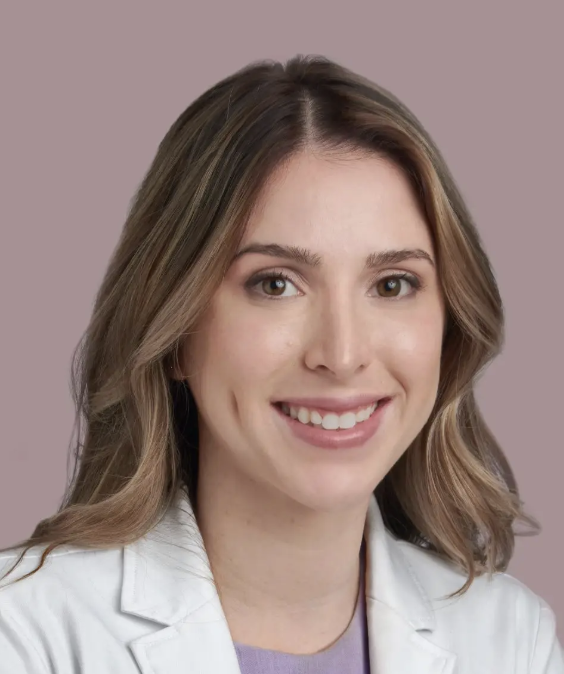
Ella Glaser, M.D. is a caring and compassionate dermatologist. She was born and raised in St. Louis Missouri and carries that midwestern charm with her to New York City. She was accepted into one of the remaining accelerated six-year medical school programs at the age of 18 at the University of Missouri Kansas City School of Medicine where she graduated Summa Cum Laude. During her medical training, she was inducted into the Alpha Omega Alpha National Medical Honor Society and the Golden Key International Honor Society. In addition, she was awarded the Women in Medicine Scholarship Achievement Award.
After graduating medical school, Dr. Glaser went on to complete her Dermatology Residency at the highly respected University of Miami Dr. Philip Frost Department of Dermatology and Cutaneous surgery. She received extensive training in complex medical dermatology, cosmetics, and dermatologic surgery. Dr. Glaser served as the Chief of Cosmetics during her final year of training.
Dr. Glaser was awarded the Rising Dermatology Star Scholarship and the American Society of Dermatologic Surgeons scholarship. She has contributed to advancing dermatology and has published manuscripts related to hyperhidrosis, lasers, and nail surgery. Additionally, after completing residency she completed a cosmetic bootcamp preceptorship.
Dr. Glaser is a member of the American Academy of Dermatology, The Women’s Dermatologic Society, and the American Society of Dermatologic Surgeons. She is passionate about delivering excellent care to all her patients. She treats all medical conditions including psoriasis, eczema, hair loss, dermatitis, cancer screenings and excisions of benign and malignant conditions. Additionally, Dr. Glaser enjoys performing a wide array of aesthetic procedures.
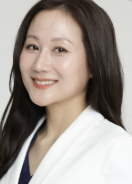
Jenny Liu, MD, is a board-certified dermatologist and assistant professor of dermatology at the University of Minnesota Medical School.

Samantha Holender is the Senior Beauty Editor at Marie Claire, where she reports on the best new launches, dives into the science behind skincare, and shares the breakdown on the latest and greatest trends in the beauty space. She's studied up on every ingredient you'll find on INCI list and is constantly in search of the world's glowiest makeup products. She's constantly tracking the biggest nail and hair trends to pop up in the beauty space, going backstage during fashion weeks, tracking celebrity looks, and constantly talking to celebrity hair stylists, nail artists, and makeup artists. Prior to joining the team, she worked as Us Weekly’s Beauty and Style Editor, where she stayed on the pulse of pop culture and broke down celebrity beauty routines, hair transformations, and red carpet looks. Her words have also appeared on Popsugar, Makeup.com, Skincare.com, Delish.com, and Philadelphia Wedding. Samantha also serves as a board member for the American Society of Magazine Editors (ASME). She first joined the organization in 2018, when she worked as an editorial intern at Food Network Magazine and Pioneer Woman Magazine. Samantha has a degree in Journalism and Mass Communications from The George Washington University’s School of Media and Public Affairs. While at GWU, she was a founding member of the school’s HerCampus chapter and served as its President for four years. When she’s not deep in the beauty closet or swatching eyeshadows, you can find her obsessing over Real Housewives and all things Bravo. Keep up with her on Instagram @samholender.
-
 'Ransom Canyon' May Give Texas the Small-Town Drama Treatment, But That's Not Where It Was Filmed
'Ransom Canyon' May Give Texas the Small-Town Drama Treatment, But That's Not Where It Was FilmedHere's what to know about the real-life ranches featured in the Netflix series.
By Quinci LeGardye
-
 I Predict These 23 On-Sale Wardrobe Staples From Nordstrom Will Be Sold Out Next Week
I Predict These 23 On-Sale Wardrobe Staples From Nordstrom Will Be Sold Out Next Week23 Must-have shoes, tops, skirts, and more.
By Brooke Knappenberger
-
 Fans Can't Stop Talking About This Rarely-Seen Royal After Easter Appearance
Fans Can't Stop Talking About This Rarely-Seen Royal After Easter AppearancePrince Edward and Duchess Sophie's son shocked royal watchers with his grown-up look on Easter.
By Kristin Contino
